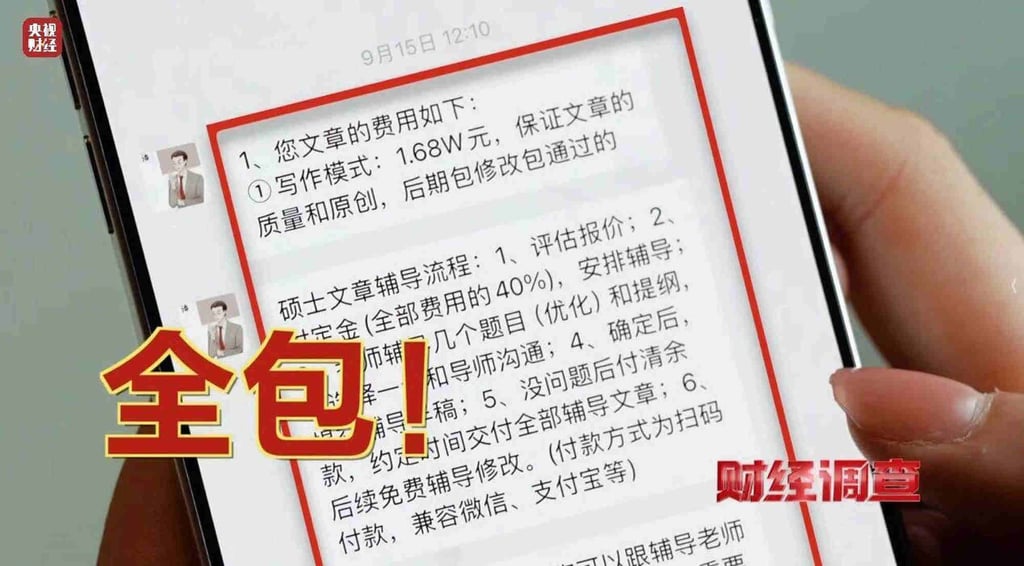Chinese paper mills are using generative artificial intelligence tools to mass produce forged academic papers, a new investigation by the mainland’s state broadcaster has found.
Advertisement
The report, which aired Sunday on China Central Television’s (CCTV) “Financial Investigation” programme, found paper mill workers using generative AI chatbots to help them each complete over 30 academic articles a week.
Paper mills that sell authorship or fabricate entire papers are a staple of China’s competitive academic landscape, where many students and researchers are subject to strict publishing targets.
In the CCTV report, several paper mills advertised their one-stop-shop ghostwriting services on e-commerce and social media platforms, including eventual submissions to leading academic journals.

As these platforms block marketing terms such as “academic ghostwriter”, paper mills initially describe their services as academic support or editing. Some even ironically describe themselves as AI detectors – tools for detecting AI-generated content.
Advertisement
The proliferation of cheap generative AI tools has enabled paper mills that previously relied on manual human labour to ramp up output. According to CCTV, one Wuhan-based agency had over 40,000 orders annually, with prices ranging from a few hundred US dollars to several thousand.

